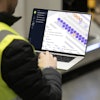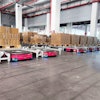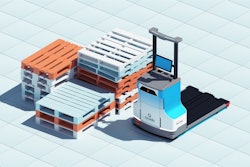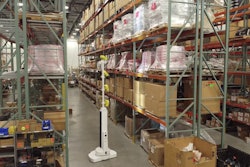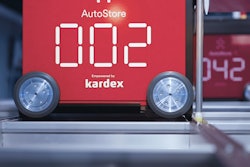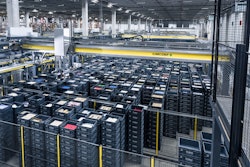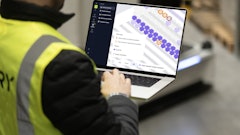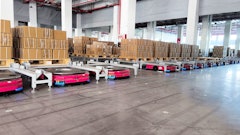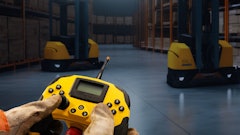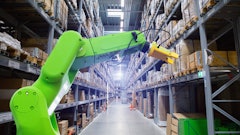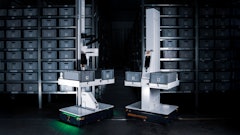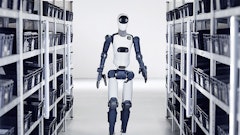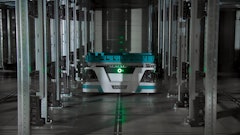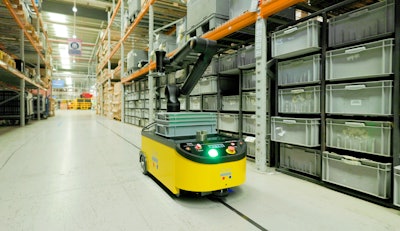
Intralogistics, once an afterthought, is becoming a more strategic focus, particularly in operations where flexibility is critical.
One approach gaining traction is the use of mobile robot arms. As expectations evolve, manufacturers are now evaluating whether automation can move and scale alongside production not just whether it can perform a task. That kind of flexibility is becoming a deciding factor, especially in facilities with limited room to maneuver.
These systems are designed to handle tasks like part delivery, inspection, and staging while remaining easy to reposition as needs change. Rather than relying on fixed infrastructure, they offer an adaptable option that integrates with existing operations. It’s a flexible layer that helps keep production moving with minimal disruption.
A growing need for adaptability
Automation needs to work within existing constraints-space, staffing and system complexity. Many small and mid-sized facilities aren’t in a position to install large fixed systems or bring in full-time robotics experts. Instead, they need modular solutions that can be deployed where the need is highest.
Recent developments are starting to meet that need. One of the more impactful changes has been integrating the robot controller directly into the robot’s base. It’s a relatively small shift in design, but one that removes the need for separate cabinets and allows robots to run directly off battery power. That change makes it easier to deploy robot arms on automated guided vehicles (AGVs) or autonomous mobile robots (AMRs) without taking up additional floor space or requiring complex cabling.
The design of the arm itself also matters. Seven-axis robot arms offer more range of motion than traditional six-axis models, allowing them to reach into tighter spaces, work around fixtures or handle tasks from more flexible angles. This is especially useful in intralogistics, where stations might be spaced irregularly and workflows often change.
From warehouse to workstation
In many facilities, workers still spend a large part of their day walking parts from storage to assembly or staging areas. It’s repetitive work that takes time away from higher-value tasks.
By pairing mobile platforms with robot arms, manufacturers are starting to automate those internal runs. The robot navigates to a designated pick location, grabs a bin or part using a gripper, and moves it directly to where it’s needed. It can also perform intermediate tasks presenting a part for inspection, staging it for packaging, or handing it off at an assembly station. One added benefit is reusability. A robot used for parts delivery one week might be reassigned to packaging the next, depending on where support is needed most.
Mobile systems not only reduce physical strain on workers but also improve consistency and help fill in operational gaps without major workflow changes.
What to consider before deployment
Even in collaborative applications, a proper risk assessment is still required. That evaluation helps determine whether physical guarding is needed and ensures the system is configured safely for its environment. In some cases, it may allow for a smaller footprint, but that flexibility only applies when it’s been validated through the assessment.
Beyond that, deployment success often comes down to the basics: designing effective grippers, mapping navigation paths and ensuring the robot can interface with other equipment or control systems. While many modern arms are easier to program and operate, close collaboration with integrators or internal teams is still critical during setup.
Looking ahead
Mobile robot arms are not designed to replace every transport task on the floor. However, they provide a compelling alternative for facilities aiming to scale automation incrementally without overhauling entire workflows or committing to fixed infrastructure.
This flexibility is especially valuable for operations responding to product mix changes, shifting customer demands, or workforce availability. Modular systems can be brought in, reconfigured or reassigned without halting broader production schedules.
Applications are expanding into areas such as machine tending, kitting, packaging and visual inspection. The modular nature of mobile robot arms enables phased adoption, impact assessment, and the gradual addition of capabilities.
As more facilities test these systems in real environments, they’re learning how to use flexibility as a tool. Not just in how robots move, but in how automation is introduced, scaled and adapted to real production needs. This approach gives teams more control over rollouts, allowing them to validate performance, refine workflows and build confidence before committing to larger investments.
Intralogistics may not be the most visible part of production, but it has a direct impact on everything from efficiency to safety to labor strategy. Mobile robot arms give manufacturers a new option for improving intralogistics to today’s constraints, whether that’s a shortage of skilled labor, a tight facility layout or the need to scale without committing to full-line automation.
Mobile robot arms offer a practical, scalable option for maintaining production flow and material movement.

